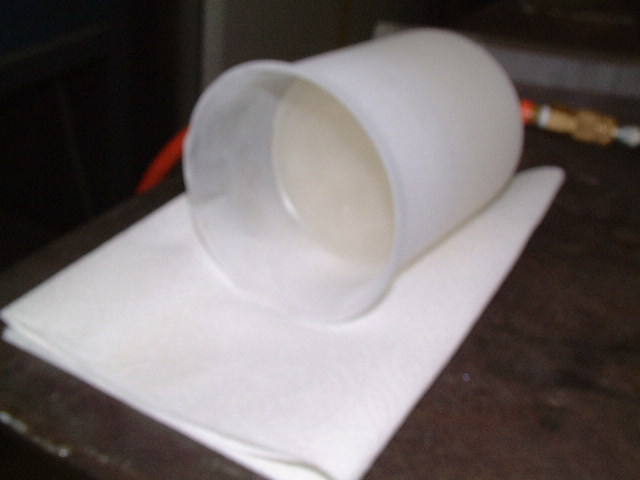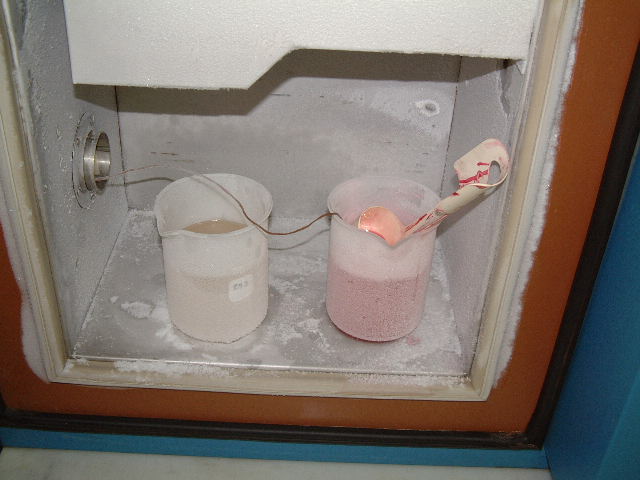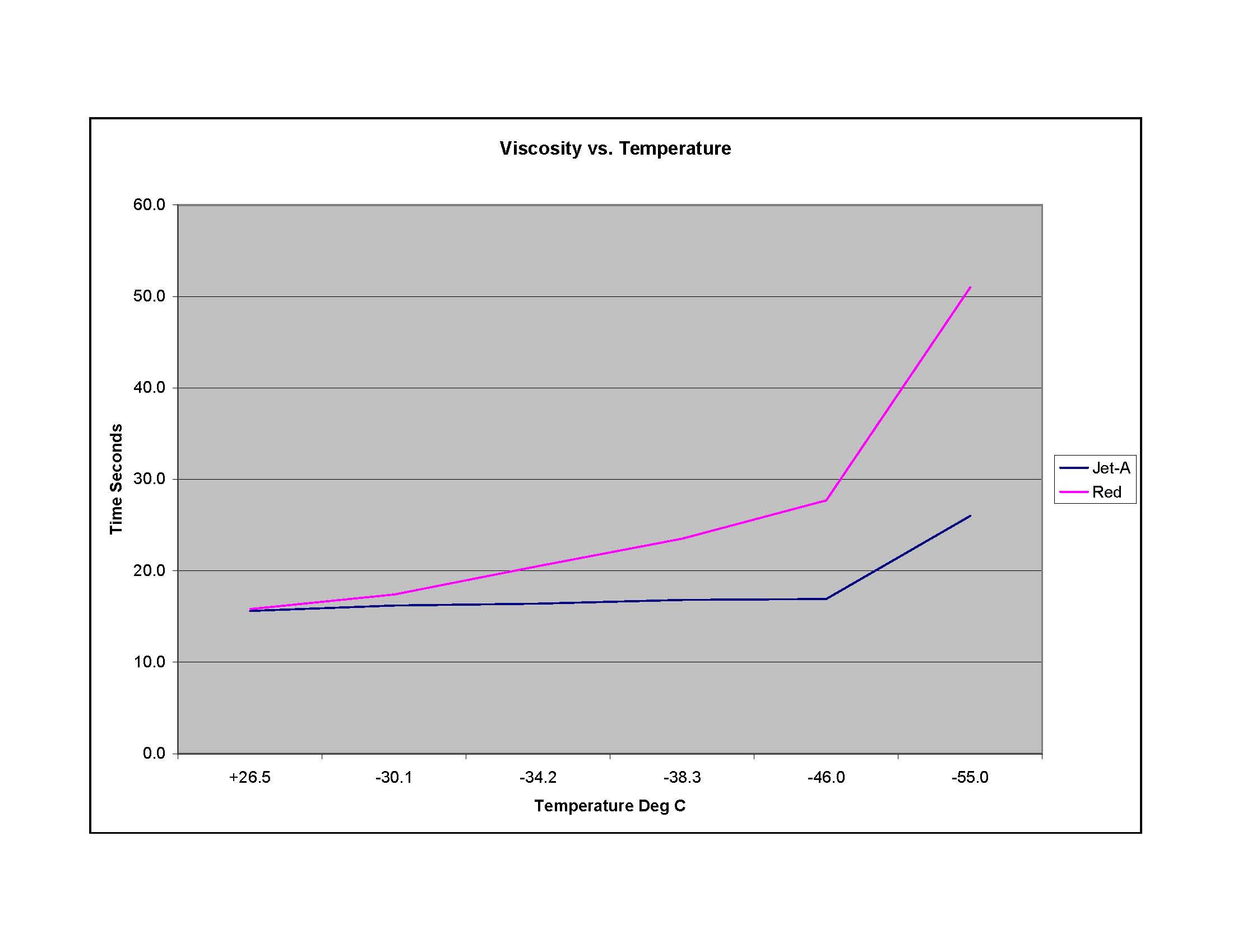|
|
The question came up the other day as to what happens to fuel ,
specifically Jet-A, when it gets really cold. There has been some
debate as to if some recent turbine flameouts have been due to an
increase in viscosity due to the low temperatures at altitude followed
by a high demand during landing. Given that "one test is worth a
thousand expert opinions" I procured some Jet-A and performed a test
using one of the environmental chambers in our testing lab.
I used a one liter beaker with about 700 CC of Jet-A, a thermocouple
probe, a painters viscosity cup, a stop watch and the thermal chamber.
For comparison I also tested some Red Tractor Diesel (used by farm
equipment since it is sold without road tax). Viscosity was measured
by dipping the cup in the fuel then measuring the time it takes to run
out a hole in the bottom.
The results are as follows. Temperatures are in Celsius and time is in
seconds.
| Temp |
Jet-A |
Red |
| +26.5 |
15.6 |
15.8 |
| -30.1 |
16.2 |
17.4 |
| -34.2 |
16.4 |
20.5 |
| -38.3 |
16.8 |
23.5 |
| -46.0 |
16.9 |
27.7 |
| -55.0 |
26.0 |
51.0 |
| -69.0 |
Solid |
Solid |
It was interesting to note that the Jet-A maintained a consistent
viscosity down to a temperature you would expect to find at the
tropopause (~-50 - 55C). Due to RVSM limitations it is unlikely that
any homebuilt will be routinely operated above FL270 where IACO puts
the temperature at -38.4C. You would need a IACO -18C day at that
altitude and enough time to cold soak the fuel before viscosity became
an issue.
Temperature had a much larger effect on the Red Tractor Diesel. I
suspect that this is because the diesel is a much broader fraction of
the distillate.
The best part of the experiment was freezing the fuel. As you can see
in the pictures the Jet-A turns into a gelatinous Vaseline like solid.
In one of my less than brilliant "licking the flagpole" moments I
touched the surface of the frozen fuel, forgetting just how cold -69C
(-92F) is. Within a second the tissue on the tip of my finger was
frozen white and hurt like hell. Fortunately the years of jousting
with fellow engineers has given me a thick skin so no permanent damage
was done. As punishment I had to say the subject line of this post 5
times without error.
One other observation was that atmospheric moisture would condense and
freeze on the surface of the fuel. I could imagine that the warm wet
air entering a vent line during decent could condense on the interior
surfaces of the tank. A good reminder to check those sumps often!
The test suggests that for operations below FL270, fuel system flow
tests at ambient temperature are sufficient to qualify the delivery
rate of the system. If an alternate fuel is considered (e.g. Red
Diesel, Bio-Diesel, fry oil etc.) then additional flow capacity would
likely be needed. For example, the time required to drain a tank
(fuel bay) of Red Diesel at -38C is roughly 80% longer than at +26C so
the fuel system would need to be designed accordingly.
Regards
Brent Regan

DSCF3118.JPG

DSCF3119.JPG

DSCF3120.JPG

Jet-A Viscosity.jpg
|
|